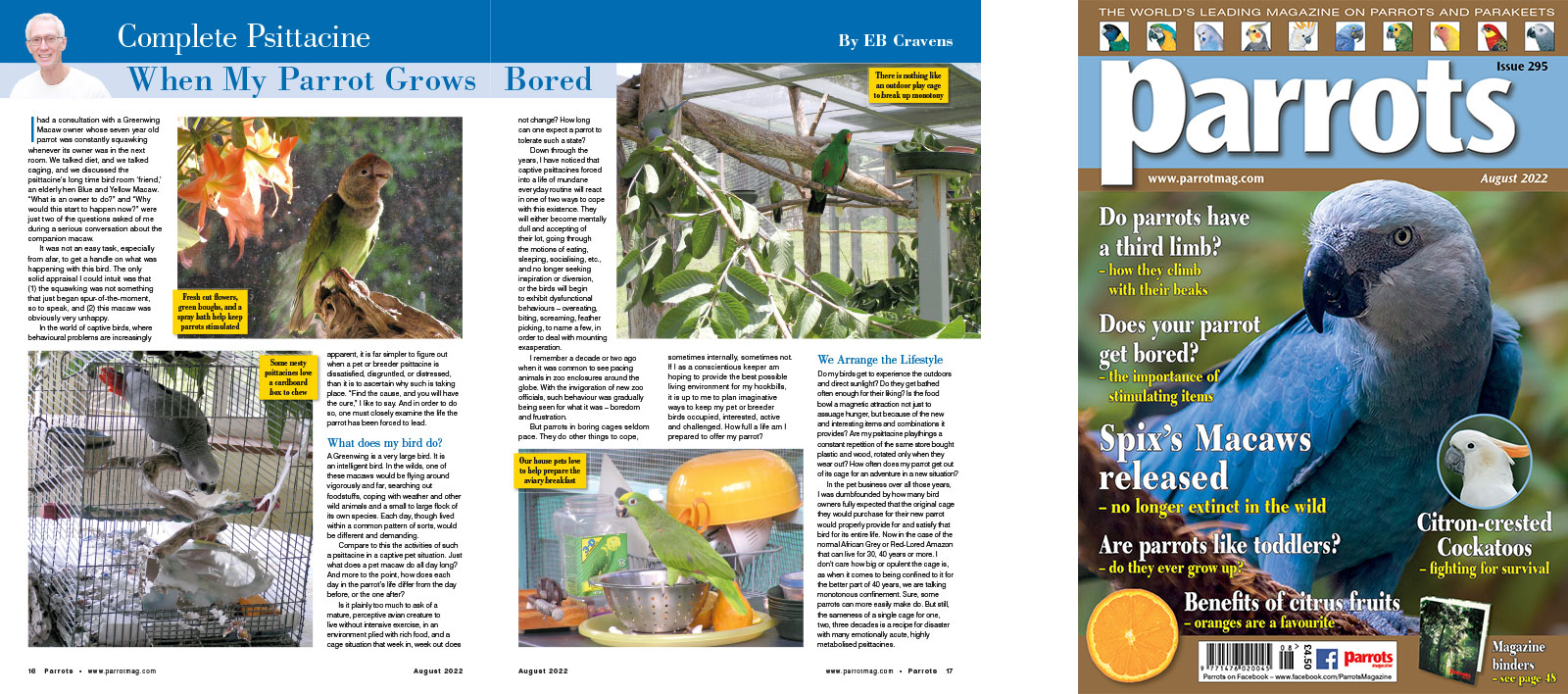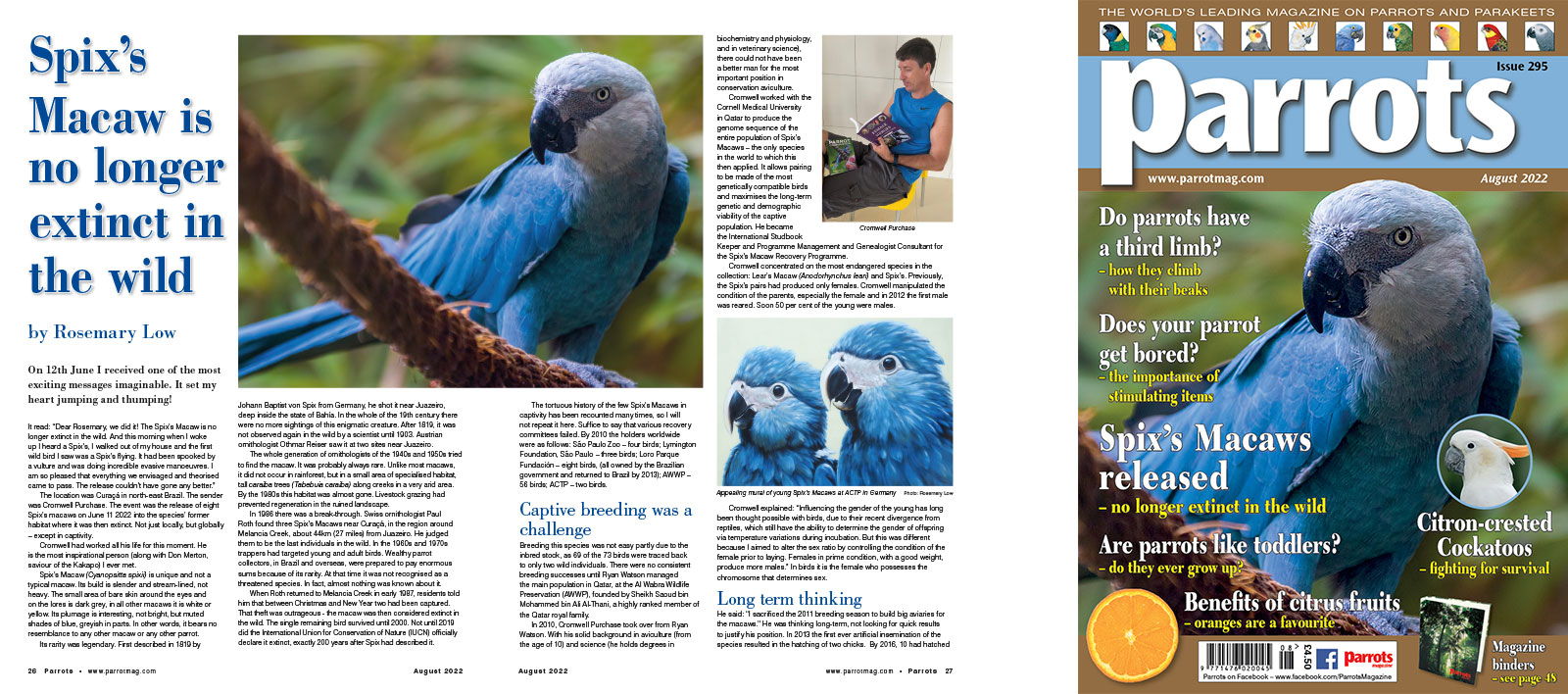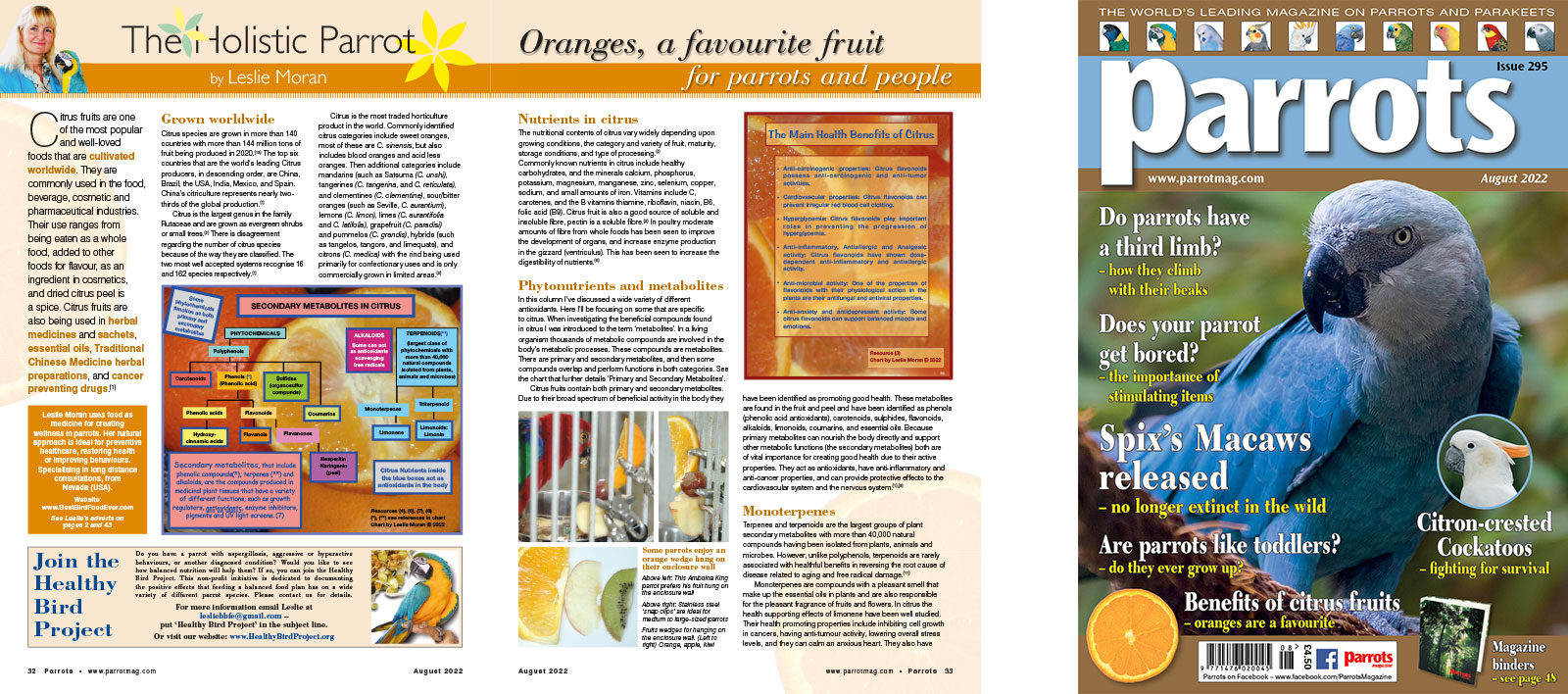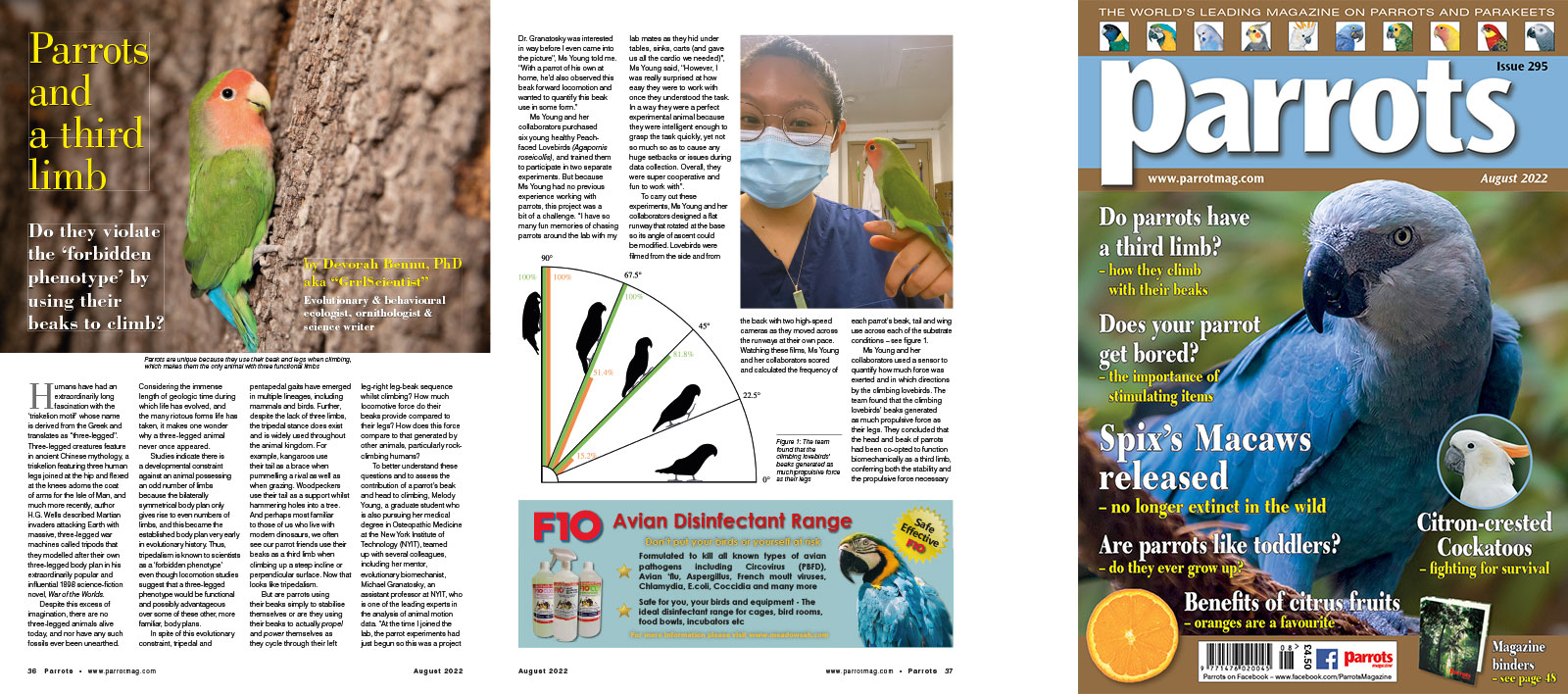
Complete Psittacine by Eb Cravens
I had a consultation with a Greenwing Macaw owner whose seven year old parrot was constantly squawking whenever its owner was in the next room. We talked diet, and we talked caging, and we discussed the psittacine’s long time bird room ‘friend,’ an elderly hen Blue and Yellow Macaw. “What is an owner to do?” and “Why would this start to happen now?” were just two of the questions asked of me during a serious conversation about the companion macaw.
It was not an easy task, especially from afar, to get a handle on what was happening with this bird. The only solid appraisal I could intuit was that (1) the squawking was not something that just began spur-of-the-moment, so to speak, and (2) this macaw was obviously very unhappy.
In the world of captive birds, where behavioural problems are increasingly apparent, it is far simpler to figure out when a pet or breeder psittacine is dissatisfied, disgruntled, or distressed, than it is to ascertain why such is taking place. “Find the cause, and you will have the cure,” I like to say. And in order to do so, one must closely examine the life the parrot has been forced to lead.
Buy Now!

By Rosemary Low
On 12th June I received one of the most exciting messages imaginable. It set my heart jumping and thumping!
It read: “Dear Rosemary, we did it! The Spix’s Macaw is no longer extinct in the wild. And this morning when I woke up I heard a Spix’s, I walked out of my house and the first wild bird I saw was a Spix’s flying. It had been spooked by a vulture and was doing incredible evasive manoeuvres. I am so pleased that everything we envisaged and theorised came to pass. The release couldn’t have gone any better.”
The location was Curaçá in north-east Brazil. The sender was Cromwell Purchase. The event was the release of eight Spix’s macaws on June 11 2022 into the species’ former habitat where it was then extinct. Not just locally, but globally – except in captivity.
Cromwell had worked all his life for this moment. He is the most inspirational person (along with Don Merton, saviour of the Kakapo) I ever met.
Buy Now!

The Holistic Parrot by Leslie Moran
Citrus fruits are one of the most popular and well-loved foods that are cultivated worldwide. They are commonly used in the food, beverage, cosmetic and pharmaceutical industries. Their use ranges from being eaten as a whole food, added to other foods for flavour, as an ingredient in cosmetics, and dried citrus peel is a spice. Citrus fruits are also being used in herbal medicines and sachets, essential oils, Traditional Chinese Medicine herbal preparations, and cancer preventing drugs.
Citrus species are grown in more than 140 countries with more than 144 million tons of fruit being produced in 2020. The top six countries that are the world’s leading Citrus producers, in descending order, are China, Brazil, the USA, India, Mexico, and Spain. China’s citriculture represents nearly two-thirds of the global production.
Citrus is the largest genus in the family Rutaceae and are grown as evergreen shrubs or small trees. There is disagreement regarding the number of citrus species because of the way they are classified. The two most well accepted systems recognise 16 and 162 species respectively.
Buy Now!

By Devorah Bennu, PhD, aka “GrrlScientist”
Humans have had an extraordinarily long fascination with the ‘triskelion motif’ whose name is derived from the Greek and translates as “three-legged”. Three-legged creatures feature in ancient Chinese mythology, a triskelion featuring three human legs joined at the hip and flexed at the knees adorns the coat of arms for the Isle of Man, and much more recently, author H.G. Wells described Martian invaders attacking Earth with massive, three-legged war machines called tripods that they modelled after their own three-legged body plan in his extraordinarily popular and influential 1898 science-fiction novel, War of the Worlds.
Despite this excess of imagination, there are no three-legged animals alive today, and nor have any such fossils ever been unearthed. Considering the immense length of geologic time during which life has evolved, and the many riotous forms life has taken, it makes one wonder why a three-legged animal never once appeared.
Studies indicate there is a developmental constraint against an animal possessing an odd number of limbs because the bilaterally symmetrical body plan only gives rise to even numbers of limbs, and this became the established body plan very early in evolutionary history. Thus, tripedalism is known to scientists as a ‘forbidden phenotype’ even though locomotion studies suggest that a three-legged phenotype would be functional and possibly advantageous over some of these other, more familiar, body plans.
Buy Now!




